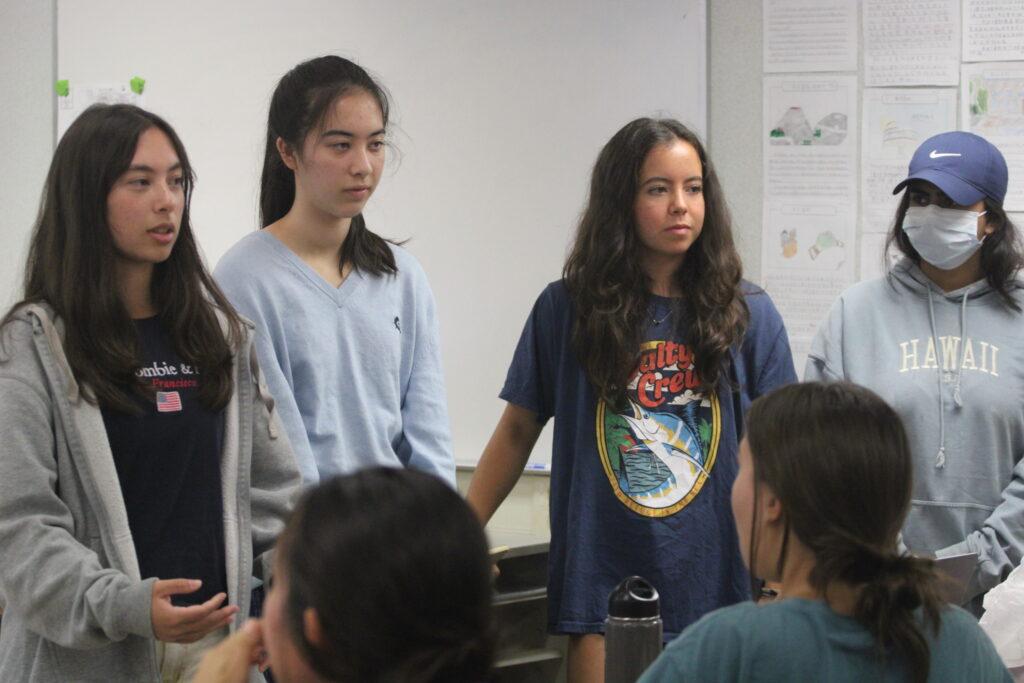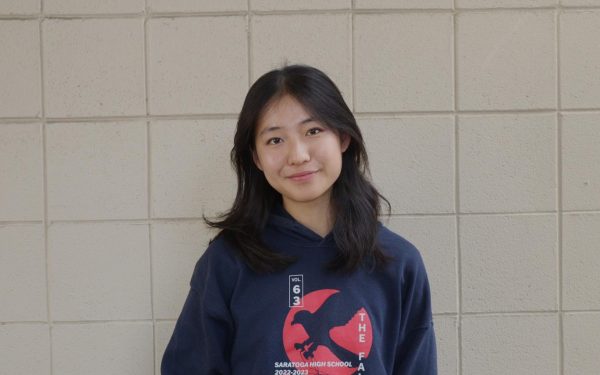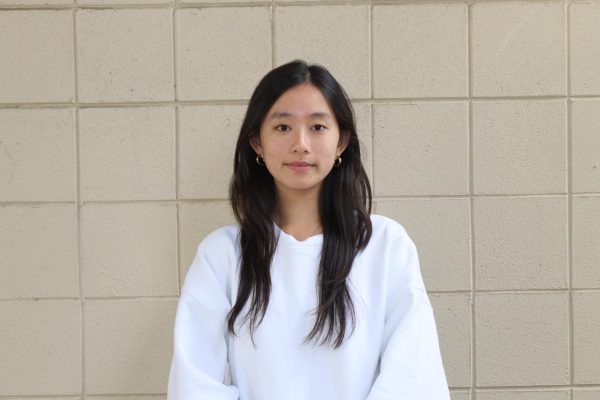From 1970 to 2019, the number of women in STEM occupations in the U.S. increased by 8%, but as of 2021, women still only make up 28% of the STEM workforce — even though they make up 50.5% of the U.S. population.
One reason for this discrepancy is the lack of role models for female students, especially teens.
Research has shown that because specialized STEM classes are optional in high school, role models during these four years are pivotal to the development of long-term interest in STEM.
Several clubs and organizations on campus are seeking to reverse these tendencies. Among them are MSET Robotics, Females for Finance (F3) and Girls Who Code (GWC).
In 2021, senior Eva Ruemmler decided to launch an F3 club with senior twins Samantha and Elizabeth Stoiber. All three of them participated in a spring females.for.finance course taught by Yale students.
The course inspired them to become ambassadors for the program.
“There’s a huge gender gap in the finance field,” Ruemmler said. “In terms of typical finance buyers, [for example, private equity firms and hedge funds], women investors are a minority. We’re trying to educate female students earlier on in high school so they know what career path they want to go into, and can have more exposure to that path.”
Ruemmler explained that the goal of F3 is to bridge inequalities in the finance industry by empowering gender minority high school students through teaching the necessary skills to increase financial literacy and even take steps towards building a career in finance. The club hosts speakers, teaches fundamental finance knowledge and runs a stock market simulation. The simulation provides members with hands-on experience to practice what they’ve learned.
So far, the club’s gender distribution has been around 90% to 100% gender minority out of 15 regular members, which has allowed more students who identify as such to feel welcomed to the club.
Junior Saemin Kim is a member of F3 and recalls joining after being intimidated by male-dominated clubs as a freshman.
“I remember on the first day there were few girls, so I kind of ran away and didn’t go there anymore,” she said. “I was a freshman, there were a lot of people, it was online and I had little knowledge about coding, so I couldn’t confidently ask questions or share opinions.”
Kim and other members enjoy the comfort they have in the club. Since F3 is smaller than other finance clubs at school, Kim has been able to participate and contribute more, allowing her to better understand each industry. She also joined Girls Who Code for many of the same reasons.
Changing group norms can be hard
Girls Who Code was started in 2014 to educate primarily female students about cybersecurity, AI and Java, and to introduce programming to them. As a branch of the international Girls Who Code nonprofit, members have access to a ready-made curriculum, videos, newsletters and summer programs, as well as presentations given by club officers on various computer science topics.
Club president Anika Verma has seen how the lack of male students has alleviated any STEM gender stereotypes in the club.
However, at a more established club like MSET Robotics, gender inequalities are much more difficult to address and change, some members say.
MSET, the school’s largest robotics team, was established over 20 years ago, and although the gender distribution in the club has improved significantly, from 10.91% non-male members in 2010, to 34.07% in 2021, subtle gender stereotypes still persist.
Toward the beginning of 2022, seniors Druthi Palle and Mahati Kotamraju brought the problem to the attention of Sheeba Garg, the First Robotics Competition (FRC) team’s lead mentor.
The mentors then held a meeting for all female and gender minority students on the team to discuss their own individual experiences with misogynistic comments.
Garg told The Falcon that “in MSET any student irrespective of gender who wants to learn and participate has an equal opportunity. “Whenever concerns are raised around inequality on any grounds, mentors have addressed them with students.”
Palle recalled the meeting with Garg and others and said the stories from females in the program were “eye-opening,” adding, “The fact that so many of their experiences were so similar made it very obvious that this issue needs to be addressed.”
Palle pointed out that the misogynistic comments she has heard from male students at robotics that are sometimes justified as “jokes.” But she thinks the barbs can be particularly hurtful, especially when they’re made in open conversations during club work sessions.
Discrepancies in female and gender minority student participation between technical and non-technical subteams, such as hardware and outreach, has also been raised as a discrepancy. Palle describes how stereotypes that female students are more fit for non-technical tasks, and a lack of female peers in technical subteams push them toward non-technical subteams.
For example, in 2021, 18% of the hardware and 36% of the software subteams were female or gender minorities, while 77% of the outreach subteam was.
Efforts have occurred to deal with these imbalances, but Palle has been disappointed by the lack of progress.
“I have not seen any effort to change from anybody,” Palle said. “We fall short as a club by not going past that point of recognizing the issue.”
Because the club strives to be a student-led organization, Palle believes that the path to change lies with changing the mindsets of student leaders.
Instead of making redundant presentations about how to respect teammates, or having discussion with only the female and gender minority students, she urges club members to have casual conversations that are both respectful and professional, in order to stimulate genuine communication and understanding.
Junior Ameya Saund, a robotics hardware member, thinks that “if we had a club for only [girls and gender minority students] who are coming into MSET, or something that connects those members to each other, a lot more of them would join.”
However, while clubs directed specifically to girls in STEM can help female students find their footing in those male-dominated fields, the female-focused goals and naming conventions of those clubs can dismantle and discourage gender minority students, especially in higher education.
Society of Women Engineers (SWE) — an advocacy group for women in engineering (with a branch in MSET) — has been particularly unwelcoming to nonbinary people. The organization allegedly prevented them from applying for scholarships, contributing to the relentless struggle against heteronormative cultures in STEM fields.
Senior Jasmine Ispasoiu, who prefers not to put a label on their gender, said that STEM spaces need to work toward accepting all gender minorities. They believe that increasing gender diversity in STEM fields requires broader inclusion to bring together a wide range of individuals facing gender discrimination to collaborate to increase gender diversity in STEM.
While working at Kode with Klossy (KWK), a free coding summer camp directed at female and nonbinary students, as an instructor’s assistant, Ispasoiu had the chance to discuss gender inequities with students.
“It was really insightful for me to hear what my students thought and what they had to say about inequities they’ve experienced,” Ispasoiu said.
The reason Ispasoiu decided to work for KWK was the welcoming and comfortable community that they had found there as a student in the summers of 2020 and 2021.
During one of their discussions, a student of theirs brought up the lack of queer representation in STEM spaces, which Ispasoiu has also observed in many classes and clubs outside of school.
“While clubs for women in STEM are amazing and are doing so much good for the world, excluding nonbinary people is an issue,” they said. “Including them as an afterthought, or grouping them as trans men in womens’ spaces, implying that they’re not men, is just as problematic.”
Ispasoiu believes it’s important to distinguish between clubs made specifically for female students and clubs for gender minorities, so as to avoid exacerbating the lack of gender minority representation by ignoring it.
They noted that in spite of the education, support and opportunities that clubs like F3 and Girls Who Code have created for female students, inequalities in the STEM field, both in and out of school persist.
Ispasoiu encourages school clubs to highlight queer engineers during meetings, advertise STEM events specifically for queer people and to partner with the Genders and Sexualities Alliance Network (GSA) or other similar organizations.
Through their experiences, Ispasoiu has found that a club focused on both female and gender minority students can develop interest in STEM more constructively by welcoming all minority genders in such male-dominated fields.
“It’s time to stray away from the ‘girlboss steminist’ narrative that has always centered around cisgender white women, and show STEM to gender minorities as something integral to our community and society the same way it is to cisgender men,” Ispasoiu said.





























